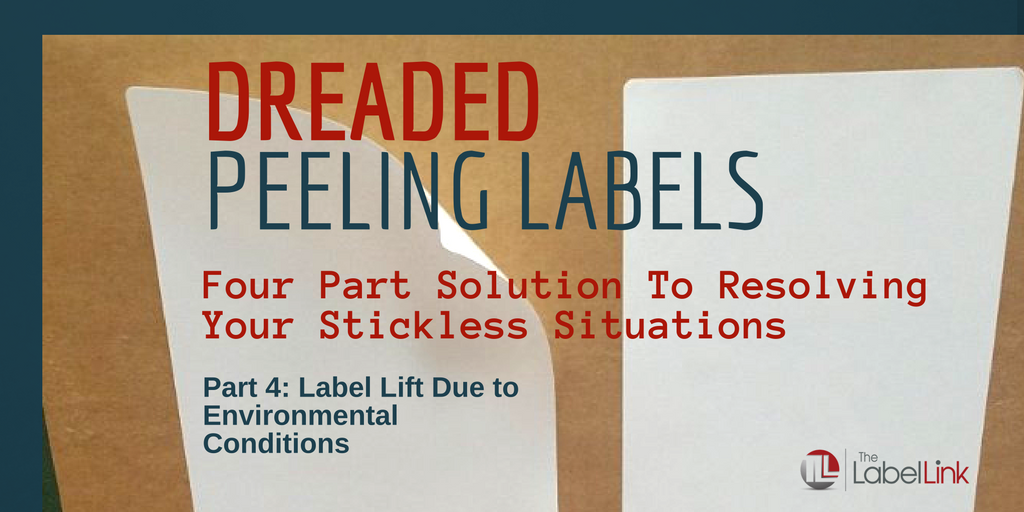
The Dreaded Label Lift Part 4: Your Label Adhesive and Environmental Conditions
It’s a sensitive combination – your container, label adhesives, and the environment in which they’re applied. If one thing is off balance, your containers will inevitably fall victim to the dreaded label lift.
There are several reasons why your labels could lift or peel off your containers. Over the past three weeks we’ve explored:
This week, we’re diving into the last of the reasons for label lift – the environment.
Temperature Flux and Condensation, Oh My!
Some products are generally stored in cool, dry places, such as refrigerated foods. Others are exposed to extreme temperature changes or moisture simply because of the nature of how the product is used. Foods, such as frozen pre-made meals or personal care products are particularly at risk of having the labels erode over time.
Let’s look closer at these two common, yet risky variables.
1. Temperature Flux
The danger of label lift happens in the first 24 hours of your label being applied.
If you apply your label while the product is extremely cold or frozen, such as before, during or after the meat packing process, a general purpose permanent adhesive will fail. It will lift off your container causing you to lose your labels and wasting your money.
The solution: Talk to your printer about the manufacturing process at the time of label design. Let your printer know about any temperature changes you anticipate in the first 24 hours.
Most of the time, if your product is not frozen within the first 24 hours, standard adhesives will be fine. If you’re filling your pre-labeled packages at least 24 hours after you’ve put the label on the product, the label will have time to adhere to the container and you should be problem free, even when the container drops to below freezing.
For all other products where you’re dropping the temperature to below freezing during the application or within 24 hours of the label application, you need freezer grade adhesive.
2. Condensation
Have you ever been to a backyard barbecue? You take an ice cold beer out of the fridge and put it in a coozie. Within a half hour, the beer bottle has beads of sweat on it and the label is peeling away slowly.
The same thing happens when you adhere the label in cold temperatures and then bring the product back to room temperature, such as is often the case with craft beer manufacturing. Condensation forms and when it does, the label is never fully able to adhere to the container. The adhesive never fully sticks, which means it doesn’t get the opportunity to bond to your product. Soon, dust and debris can sneak their way underneath, making it harder for the adhesive to bond with the intended surface.
It’s a recipe for disaster but there are ways you can overcome condensation:
- Allow 24 hours after you’ve labeled your bottles to let the adhesive set.
- If you can’t wait that time and must label in line, consider adjusting the room temperature to minimize condensation.
- Use labeling application equipment with blowers or wipes that remove condensation just prior to labeling on their line.
Question: Have you experienced label lift because of temperature flux or condensation?
The key to all of this is to test, test, test! Testing might feel like a time drain up front, but consider this: The more your labels continue to lift, the more you’re wasting product, hurting your brand, and losing even more time redoing everything after the labels have failed.
Can we help you too? Click here to input your specification and request samples so you don’t get caught in a sticky (or not sticky enough) situation!
